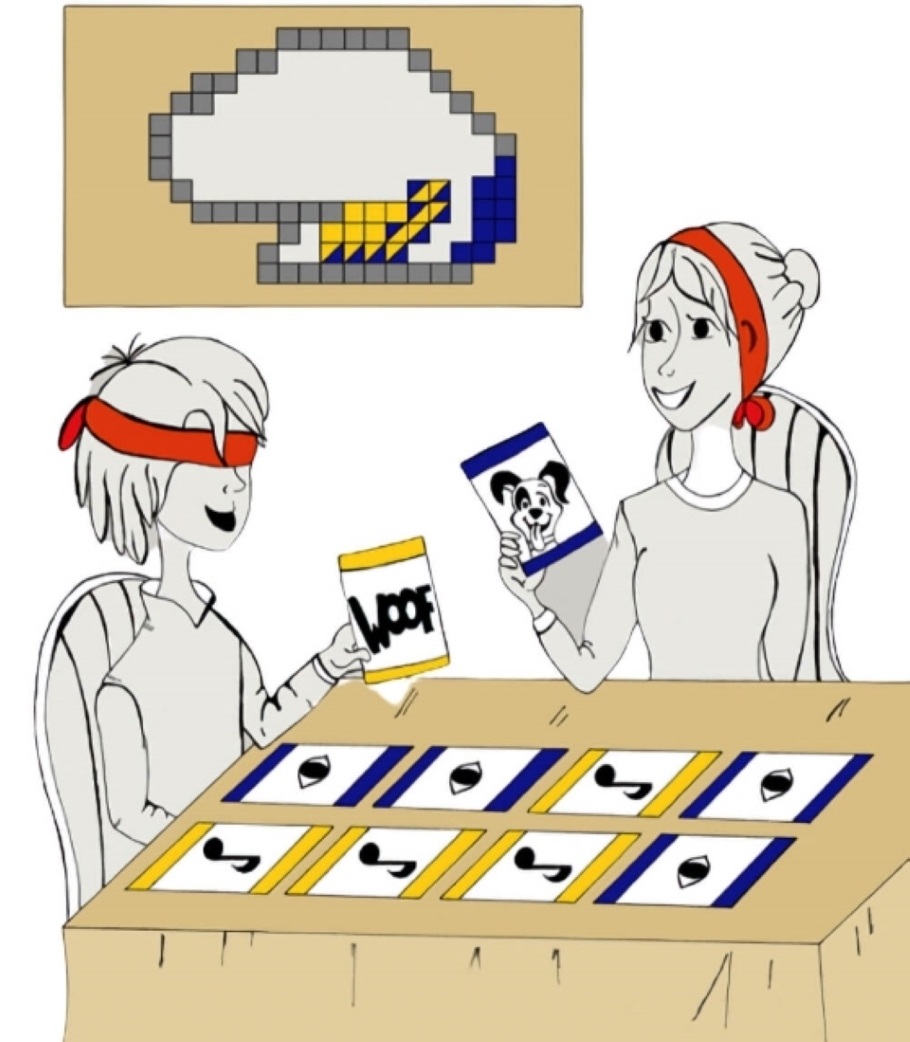I Can Not See, I Can Not Hear, But Somehow I Know
Author: IMT School for Advanced Studies Lucca
Published: 2023/01/16
Peer Reviewed Publication: Yes
Category Topic: Medical Research News - Academic Publications
Page Content: Synopsis - Introduction - Main
Synopsis: A study involving blind and deaf people shows that the brain innately possesses a specific architecture to integrate information coming from the senses. We hypothesized that some areas of the cortex, known to process more than just one sensory input, may possess a predetermined structure that aids the perception of sensory events by matching coherent inputs across sensory modalities.
Introduction
A Modality-Independent Proto-Organization of Human Multisensory Areas - Nature Human Behavior.
To build a representation of the external world and give it a coherent sense, our brain needs to process and integrate information from all senses, including vision and hearing. But whether this "multisensory processing" is innate and present from birth in the human brain or depends on experience remains an open debate.
Main Content
Now, a novel study by an Italian team of neuroscientists from the IMT School for Advanced Studies Lucca and the University of Turin shows that the ability of the brain to represent coherent information across senses primarily relies on an innate functional architecture of specific regions in the brain cortex that works independently from any sensory experience acquired after birth. The study, published in the current issue of Nature Human Behaviour, adds to the old "nature versus nurture" debate and brings further weight to the evidence that brain architecture can develop independently from sensory experience.
"We hypothesized that some areas of the cortex, known to process more than just one sensory input, may possess a predetermined structure that aids perception of sensory events by matching coherent inputs across sensory modalities," explains Emiliano Ricciardi, professor of psychobiology and psychophysiology at the IMT School, who led the research.
"Since this idea can hardly be tested at birth, we purposely determined the consistent responses across adults deprived since the birth of either sight or hearing: any shared brain response across these individuals, whose post-natal experiences inevitably differ, would be indicative of an innate computation."
To conduct the study, the researchers compared the brain activity in three groups: people with typical development, congenitally blind, and congenitally deaf people. The specific brain response was assessed with Magnetic Resonance Imaging (fMRI) while the subjects were watching or listening to the same edited version of the Walt Disney movie "101 Dalmatians". Specifically, blind individuals listened to the acoustic version of the movie, while deaf people watched the visual version. The same experimental conditions were adopted with typically developed sighted and hearing individuals. Brain responses were then compared.
"By measuring brain synchronization between individuals who were watching the movie and those who were listening to the narrative, we identified the regions in the brain which coupled information across sensory modalities," explains Francesca Setti, a researcher in neuroscience at IMT School and first author of the paper.
"We found that a specific patch of cortex, the superior temporal cortex, endorses a representation of the external world that is shared across modalities and is independent of any visual or acoustic experience since birth, as the same representation is present in blind and deaf participants as well."

In their work, the researchers provided evidence that this area of the brain cortex encodes various basic properties of stimuli, and couples information from the two different senses, the visual and the acoustic channel.
"In simple words, this is the area where the visual image of a 'dog' is coupled with the acoustic signal of the dog barking, making clear to our brain that the two stimuli coming through two different senses refer to the same 'object' in the world," says Setti.
"Overall, these data show that basic visual and auditory features are responsible for the neural synchronization between blind and deaf individuals," adds Ricciardi.
"This research extends results from previous studies by several labs, including ours, that consistently indicate that most of the large-scale morphological and functional architecture in the human brain can develop and function independently from any sensory experience" comments Pietro Pietrini, Director of MoMiLab (Molecular Mind Laboratory) at the IMT School and coauthor of the study.
"The wider implications are that we should promote more inclusive educational strategies and social policies for individuals with sensory disabilities, as their brains are the same," concludes Pietrini.
Attribution/Source(s): This peer reviewed publication was selected for publishing by the editors of Disabled World (DW) due to its relevance to the disability community. Originally authored by IMT School for Advanced Studies Lucca and published on 2023/01/16, this content may have been edited for style, clarity, or brevity.